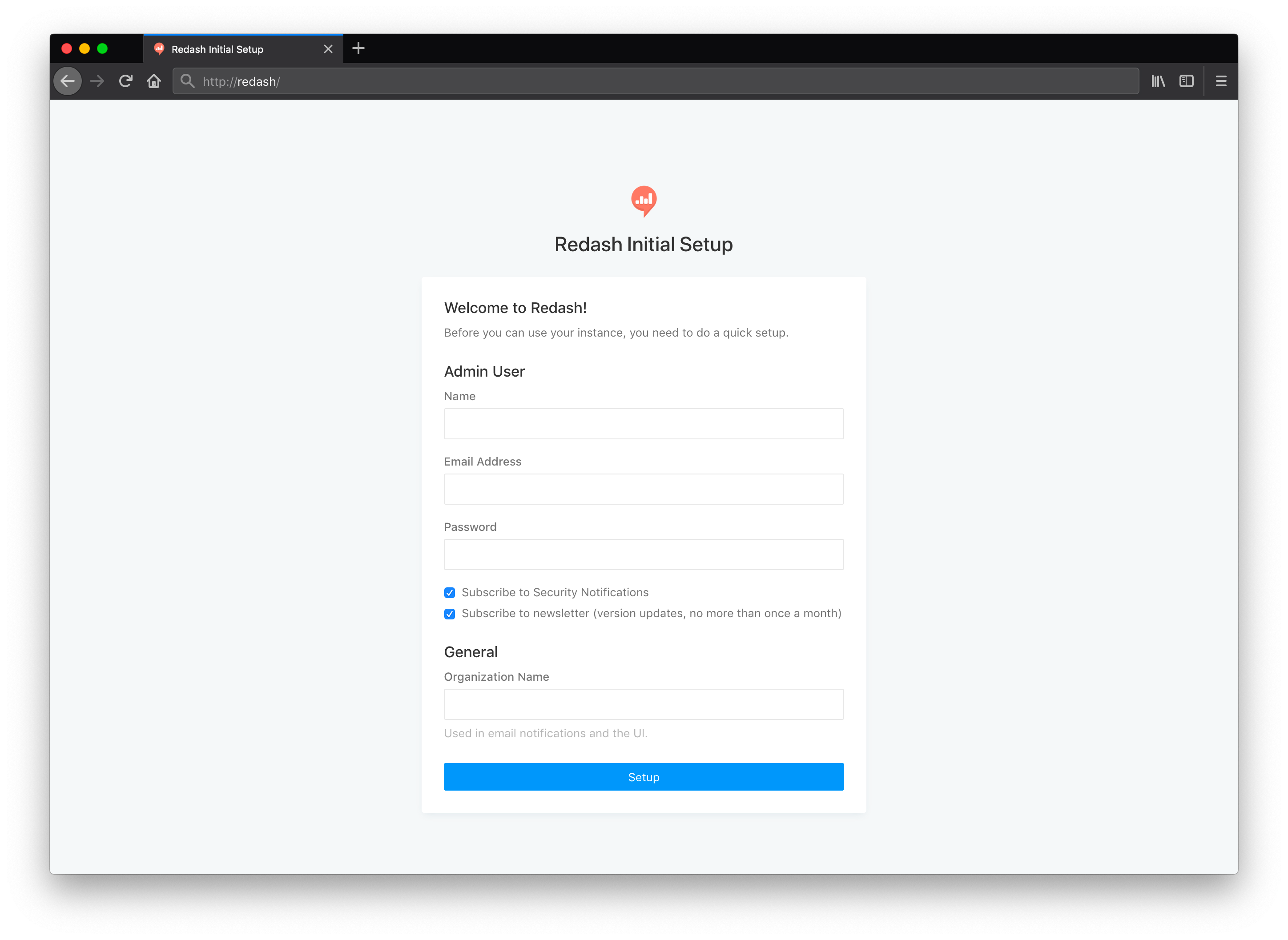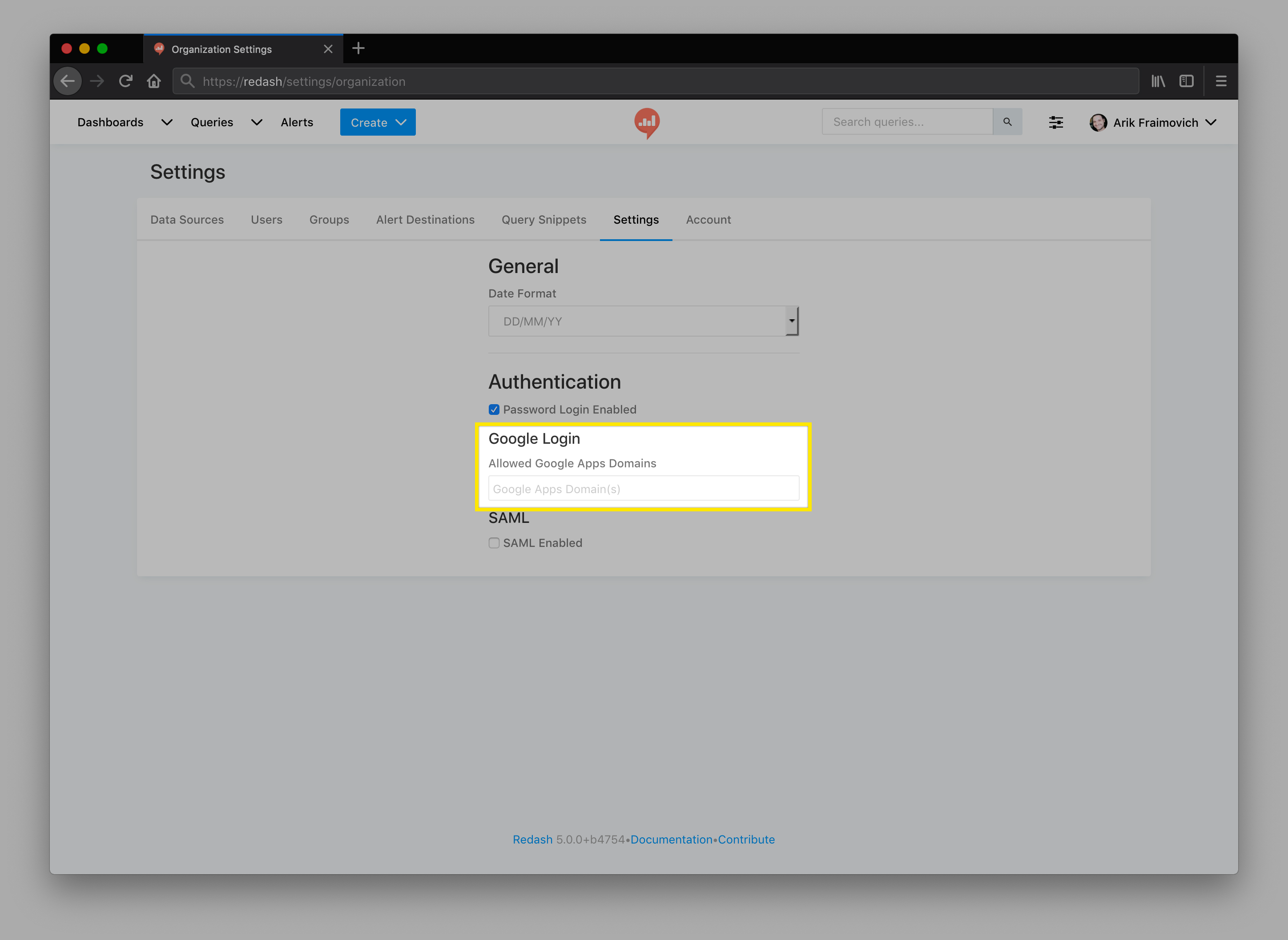How to Set Up a Read Report on Yahoo.com
Create an Example
For basic deployments nosotros recommend a minimum of 4GB of RAM and reasonable amount of CPU allocation. As usage grows you might demand boosted RAM and CPU power to support increased number of groundwork workers and API processes.
To create an instance, you lot accept the following options:
- AWS EC2 AMI
- DigitalOcean
- Google Compute Engine Image
- Other
- Docker
We have non updated our official images for V10 yet. Withal, you can deploy a V8 instance and upgrade it following these instructions.
There is a video demonstration of this process below
AWS
Launch the instance with the pre-baked AMI nosotros create (for small-scale deployments t2.small should be enough):
| Region | AMI |
|---|---|
| the states-east-1 | ami-0d915a031cabac0e0 |
| united states of america-east-2 | ami-0b97435028ca44fcc |
| us-westward-1 | ami-068d0753a46192935 |
| us-west-ii | ami-0c457f229774da543 |
| european union-west-1 | ami-046c6a0123bf94619 |
| european union-west-two | ami-0dbe8ba0cd21ea12b |
| eu-west-3 | ami-041bf9180061ce7ea |
| eu-fundamental-one | ami-0f8184e6f30cc0c33 |
| eu-northward-one | ami-08dd1b893371bcaac |
| ap-south-one | ami-0ff23052091536db2 |
| ap-southeast-i | ami-0527e82bae7c51958 |
| ap-southeast-two | ami-0bae8773e653a32ec |
| ap-northeast-ane | ami-060741a96307668be |
| ap-northeast-ii | ami-0d991ac4f545a6b34 |
| sa-e-1 | ami-076f350d5a5ec448d |
| ca-central-1 | ami-0071deaa12b66d1bf |
(the above AMIs are of version: viii.0.0)
When launching the example make sure to utilize a Security Group, that only allows incoming traffic on ports: 22 (SSH), 80 (HTTP) and 443 (HTTPS). These AMIs are based on Ubuntu so you volition need to use the user ubuntu when connecting to the instance via SSH.
Now proceed to "Setup".
DigitalOcean
To get started on DigitalOcean, you tin use the prototype from DigitalOcean's Marketplace (Redash on the Market place). Once started the Droplet, continue to "Setup".
Google Compute Engine
To get started on GCE, run the following commands in your Deject Shell.
Offset, y'all need to add the Redash epitome to your business relationship:
$ gcloud compute images create "redash-8-0-0" --source-uri gs://redash-images/redash.8.0.0-b32245-1.tar.gz Side by side, yous need to launch an case using this image. The n1-standard-one machine blazon is recommended. You can launch an case using the image with the command beneath (you may need to specify the zone of the case with the --zone parameter):
$ gcloud compute instances create redash --epitome redash-8-0-0 Now go along to "Setup".
Other
The AWS, DigitalOcean and Google Compute Engine images are created using our Setup Script, which is designed to run on Ubuntu 18.04 server. You can either utilize the script as is (if you intend to run it on Ubuntu) or use it equally a blueprint to create your own setup.
What the script does is:
- Install Docker and Docker Compose.
- Download our recommended Docker Etch configuration and create initial configuration.
- Start everything.
Annotation that the script assumes you lot are running information technology on a "clean" machine. If you're running this script on a machine that is used for other purposes, you might desire to tweak it to your needs.
Docker
For every Redash release nosotros also create updated Docker image. Our paradigm follows best practices and tin can exist used in any container orchestation platforms similar Kubernetes, ECS or only merely with Docker Etch (which we use in our images).
If you lot exercise not utilize one of our cloud images, you must manually gear up Redash's secret keys:
- Create a
.envin the same folder as yourdocker-compose.ymlfile. - Write whatsoever sensitive environment variables in bash syntax:
REDASH_SECRET_KEY= ... REDASH_COOKIE_SECRET= ... GOOGLE_CLIENT_ID= ... Do not commit this file to version command.
For evolution environs setup, delight refer to the developer guide (which includes Docker specific instructions as well).
To run Redash you need several instances of Redash (API server and background workers to run queries) along with Redis and PostgreSQL. If you don't desire or can't apply our images or Setup Script, you tin refer to the Docker Etch configuration to understand what services you need to define.
Setup
Once you created the instance with either the image or the script, you should accept a running Redash case with everything you lot need to get started. Redash should exist available using the server IP or DNS name you assigned to information technology. You tin point your browser to this address.
Earlier you tin can go along, it volition ask you to create your admin account. Once this is done, you lot can start using Redash.

Make sure to consummate the web based setup earlier using the CLI or proceeding with the rest of the setup.
To brand your setup more complete, there are a few more steps that yous demand to manually do:
Mail Configuration
For the system to be able to send emails (user invites, password resets, when alerts trigger and more), you demand to configure Redash with the mail server you lot use. Mail server configuration is done using Envrionment Variables. If yous're using one of our images, you can practise this by editing the /opt/redash/env file.
The relevant configuration variables are (note that not all of them are required):
-
REDASH_MAIL_SERVER(default: localhost) -
REDASH_MAIL_PORT(default: 25) -
REDASH_MAIL_USE_TLS(default: fake) -
REDASH_MAIL_USE_SSL(default: fake) -
REDASH_MAIL_USERNAME(default: None) -
REDASH_MAIL_PASSWORD(default: None) -
REDASH_MAIL_DEFAULT_SENDER(Email address to send from)
Also you need to set the value of REDASH_HOST, which is the base accost of your Redash case (the DNS proper noun or IP) with the protocol, and so for case: https://demo.redash.io.
In one case you lot updated the configuration, restart all services (docker-compose up -d, running docker-compose restart won't be enough as it won't read changes to env file). To test email configuration, y'all can run docker-compose run --rm server manage send_test_mail.
It'south recommended to use some mail service, like Amazon SES or Mailgun to transport emails to ensure deliverability.
Google OAuth Setup
If y'all desire to use Google OAuth to authenticate users, you need to create a Google Developers project (run into instructions so add the needed configuration in the /opt/redash/env file:
-
REDASH_GOOGLE_CLIENT_ID(Google OAuth Customer ID) -
REDASH_GOOGLE_CLIENT_SECRET(Google OAuth Client Secret)
Once updated, restart the web server (docker-compose upward -d server). Once enabled, Redash will utilize Google OAuth to authenticate existing user accounts. To enable automatic user creation who belong to a specific domain proper noun, you lot tin can add this domain (or more) in the setting folio:

Other Configuration Options
Redash uses environs variables for configuration. For a full list of environment variables, see the settings commodity.
HTTPS
If this is a production setup, you should enforce HTTPS and make sure you prepare the cookie secret (see instructions).
Health Cheque for Installation
After your installation is consummate, you can do the healthcheck by calling /ping API endpoint.
How to upgrade?
It'due south recommended to upgrade when new releases are available to benefit from bug fixes and new features. Meet here for full upgrade instructions.
Source: https://redash.io/help/open-source/setup/
0 Response to "How to Set Up a Read Report on Yahoo.com"
ارسال یک نظر